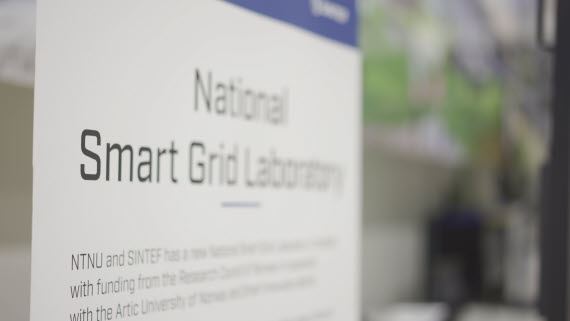You probably know very well that solar panels, wave power and wind power will give us the green energy we need when cars, factories and light aircraft are to run on electricity. But today, this electricity is transported from the solar panels to the electric cars via an ageing electricity grid. As the ways we produce and use electricity are modernized, so too must the electricity grid be modernized. There is a lot of research on completely new technologies that will revolutionize the electricity grid. But there is a technology first invented long ago that will be crucial to the success of the future of electricity grids: Converters.

Fredrik Göthner is writing a PhD thesis in CINELDI. This is where he is researching converters. We talked to him to hear what converters actually are, the role they will play in the future, and why he is researching them when the technology already exists.
From one type of electricity to another
The role of converters in the electricity grid is to convert the electricity from one type to another, according to Göthner. “Different energy sources can produce different forms of electricity. For example, the power coming from solar cells is completely different from that coming from wind turbines. In order to be able to connect these energy sources in an electricity grid, it is a prerequisite that the currents are converted to the same type, and this is where the converters come into play. Put in a more technical way: the low-voltage electricity grid in Norway, i.e. the grid that supplies our homes, uses alternating current (AC) with a voltage of 230 volts and a frequency of 50 hertz. However, solar cells produce direct current (DC), while wind power often produces alternating current at a different frequency than the grid frequency. The job of the converters is to convert the current from the various sources so that it matches the grid voltage and frequency.”
The converters of the future in the electricity grid of the future
Most people have traditionally used electricity in a predictable way. Now, however, the consumption pattern is changing rapidly. At the same time, Norway has traditionally had a few large production facilities, often hydropower plants, outside the cities. More and more small production facilities close to customers are now being introduced. For example, solar cells on private rooftops. As most people know, electricity must also be produced and used at the same time. Unfortunately, the sun is not always up when you need to turn on the light. One solution to this is to insert batteries into the electricity grid so that we can store the power until we need it. “These trends also present some challenges. For example, it can be demanding to coordinate many small converters, instead of a few large production facilities. On the other hand, the converters also provide opportunities to improve other things, such as the voltage quality in the grid,” says Göthner. “What I am working on definitely has a high utility value for industrial companies that make converters,” Göthner states.
Unique access to expertise in CINELDI
Because Göthner is writing his PhD thesis at the research centre CINELDI, he is able to participate in a world- leading research environment on the electricity grid of the future. This has its benefits. “There are undoubtedly many more resources, both in terms of people and laboratories, that I can make use of. Here, there are many people with a high level of expertise, from industry, grid companies, Statnett and SINTEF, who all have different perspectives. This is valuable in a large centre.” In his research, a lot of Göthner’s work involves simulating reality to see how the converters react in different situations. In the so-called Smart Grid Lab (the National Smart Grid Laboratory), he tests the results from his simulations in more realistic situations. “In the lab, I try to see if the things I have thought of and simulated actually hold up in a more real setting too. I can then connect real converters to advanced lab equipment that mimics a real electricity grid. I often run smaller tests with one, two or three converters that try to validate or falsify what I have been working on and simulated. This is important to ensure the quality of my results.”

